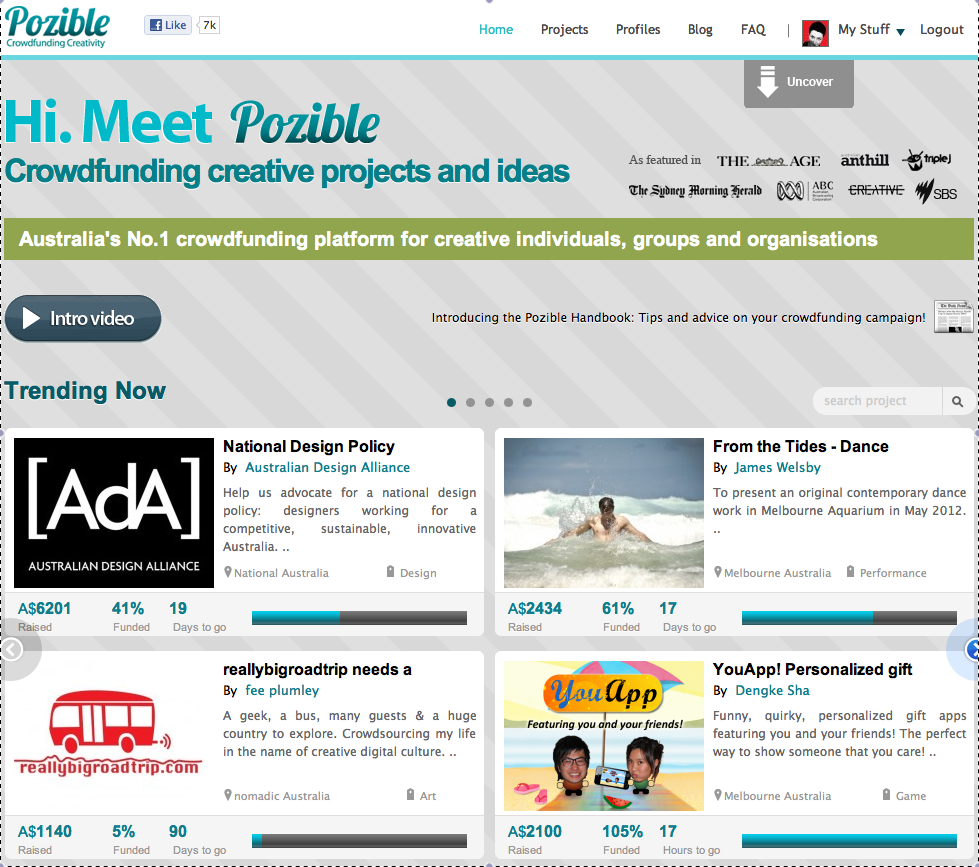It’s now been a couple of weeks since my life exploded into a million pieces. I’ve had a chance to breathe, get to Sydney, sleep, get sick, have a birthday, recover (sort of, this damn flu is holding on for dear life) and reflect. So here’s part one in a series of summary posts outlining what happened.
Ever since I started talking about reallybigroadtrip people assumed I would crowdsource funding for the bus. I was already openly crowdsourcing my life, and I knew that at some stage I would run some kind of crowdfunding campaign, it was obvious, right? But I had avoided it; I really didn’t want to start there. I’ve never been any good at asking people for help, financially or otherwise. I got my first job when I was 8 years old and have almost always been independently financially responsible ever since.
My fear was that people would assume I was just getting other people to pay for my hobby, begging from others to fund my ‘jolly’. Funnily enough eventually it was the power of the crowd that convinced me this was the right way to go – the only way to go. My friends and colleagues in media arts nudged me to add a donation button to my blog and reminded me that this wasn’t just for me – that the media arts sector generally would benefit from the noise I generated about this largely misunderstood creative practice. Eventually I listened.
Lesson One: The crowd is awesome; listen to them, for they really do know what they’re talking about.
Crowdfunding models
In case you’ve missed all this and don’t know what I’m taking about: crowdfunding is asking a large number of people to contribute small amounts of money towards a larger financial goal. I had tried & failed going via the ‘traditional’ funding route, but this isn’t a traditional art project. Quite frankly there isn’t enough subsidy funding to match the demand in Australia or anywhere (something I’ll continue ranting about until we get it right).
There are heaps of different platforms out there these days that help you raise and manage contributions from the crowd. Kickstarter is the biggest American one and Pozible is the biggest Australian equivalent. Both use the all-or-nothing crowdfunding model; if you need $25k but you only raise, say, $10k, you get nothing. That might seem harsh, but there’s a reason all-or-nothing exists. With Indiegogo you get whatever you raise, which can be great but can also cause problems.
Say you need $3,000 to fly to Europe to screen your work at a festival (a very common crowdfunding campaign case) and then you only raise $1,000. You can’t buy a flight for $1,000, but you would still take the $1,000 from all the people who wanted to support you. You might be able to leverage that $1,000 elsewhere, but you might not. If not, your community get to watch you spend their money while not achieving your goal… which is no good for anyone.
It’s worth also mentioning StartSomeGood which I only heard of toward the end of my campaign. It’s more of a hybrid model and focuses on ‘peerfunding’ for more socially focused enterprise. They run two campaign targets, a ‘tipping point’ and a ‘goal’, for more scaleable projects.
Say you want to take free 3d printing workshops to communities in regional/remote Australia. You’d need say $5k (for the printer, a laptop, etc) and then each session would cost say $3k (for travel/accom/workshop resources/marketing). Your tipping point would therefore be $8k to take the kit and your team to a community in one state/territory, but your goal could be $26k to deliver workshops in every state/territory. Once you reach your tipping point you know that the project is live and tangible. For every new $3k that gets raised, you can add on a new workshop destination.
In retrospect Start Some Good might have been a better solution for my project, but I didn’t know about it back then. Besides, I really wanted to run this first experiment through an Australian company. I’m glad I did in many ways, Rick and the team are great – so supportive and encouraging. They really work hard to help you get where you’re going and that is incredibly useful.
Setting your campaign target
I realistically needed about $55,000 to get the project off the ground. That money would go on buying the bus and making the modifications, buying some gear, contributing toward a few national and international Nomads in Residence with a bit of budget to make some art, and some easier-breathing living costs. I very nearly set my campaign at this full amount. Just before the campaign started I changed my mind and lowered those expectations, setting my target at $25,000 to be a bit more reasonable.
Lesson Two: $25,000 is a huge target and added way too much additional pressure: go lower, or go scaleable.
This was a tricky one, though. I figured I would need to spend something in the range of $15-20k on the bus itself, never mind modifications. I might be able to find a bus for $5,000, but it would be more likely to break down every 300kms, which would have been a massive false economy. I didn’t have a bus in mind other than knowing it had to be a diesel Toyota Coaster because they’re sturdy and you can easily find parts around the country.
People asked during the campaign why I needed a bus, why I wasn’t just travelling around the country on public transport or even hitching. I explained an bit more about my reasons in one of my posts during the campaign (so I won’t repeat it here).
Crowdfunding advice
The best advice I can give is to put all this into a bit of context. Most successful crowdfunding projects are either run by celebrities, or they presell products/music/events/games/films. I am certainly not a celebrity, and I was not pre-selling anything. $25,000 was a LOT of money to be asking as one little person all on her own trying to do something that (despite my best intentions) is still considered niche and emerging. It was HARD WORK. Three months is a long time, especially if after all that effort you end up with nothing.
I’ve written a ‘Top Tips’ post with lots of detailed advice which I’ll publish soon, but I’m far from the only source. There’s a huge amount of info available via the Kickstarter School and Pozible has a handbook and tours info-sessions. On top of that there are heaps of people blogging about their own experiences; I especially love Ze Frank’s Kickstarter post-mortem and Corvus Elrod’s Every Kickstarter a success.
The Australia Council for the Arts has just launched a national tour to help artists get the most out of crowdfunding opportunities, and there are some pretty cool new partnerships emerging. ArtsHub have just come on board with Pozible to help increase promotional reach, and ScreenWest have launched 3 to 1, a matched funding initiative for Western Australia.
Love it or hate it, crowdfunding is the future. The risk is that it could be used as a replacement for traditional funding. But while subsidy doesn’t meet demand this is a fantastic way to increase self-sufficiency. In Australia we just need some tax deductible status and things will look a lot more rosy for niche producers looking to build community and raise startup capital for their innovations.
…Read on to part two: Getting started and part three: Belief.


3 comments » Write a comment